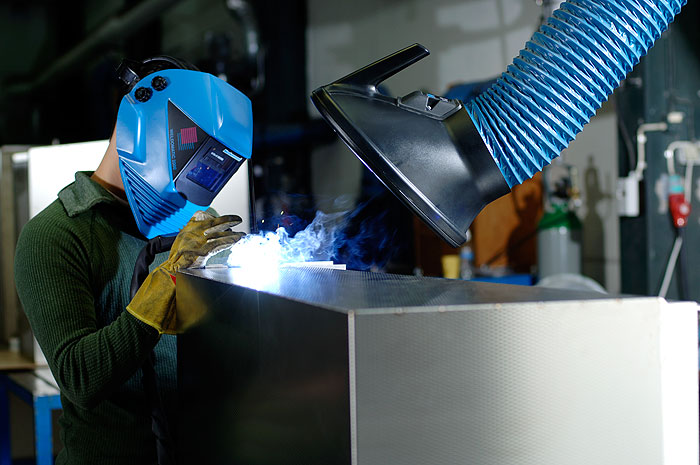Local Exhaust Ventilation Systems – When To Call In The Pros

Over time, it is inevitable that even the most advanced and capable industrial ventilation and extraction systems will require professional attention. Even with regular LEV testing, it is impossible to entirely pre-empt, predict and prevent problems from occurring. A high quality system has the potential to last for decades, but sooner or later it will be necessary to call in the professionals.
The good news however is that more often than not, the system in question will give its respective owner/s plenty of advance warning that something isn’t quite right. Problems may be picked up during the testing process itself, but it is also important to keep an eye out for certain warning signs at all other times. The reason being that the sooner the problem is addressed, the higher the likelihood of it being repaired simply, quickly and affordably.

You can’t be expected to examine every element of your LEV installations manually, but should any of the following warning signs be picked up on, you might want to think about speaking to the professionals:
First of all, one of the most common and characteristic warning signs of a problem with an industrial LEV system is the apparent inability to gain control over the ambient temperature. It could be that things feel considerably warmer than it should be, perhaps the interior temperature is suspiciously cold or it might be that the temperature seems to be continually fluctuating from one extreme to the other for no apparent reason. When this is the case, it quite often comes down to the fact that the ventilation and extraction systems are for one reason or another not doing their job as well as they should be. It could be a blockage, a mechanical issue or a great many other things, but in all cases it is important to have the system comprehensively checked at the earliest possible juncture.
It’s not as if the vast majority of ventilation systems are particularly silent anyway, but it should nonetheless be relatively obvious if and when noise becomes somewhat excessive. You and you alone are the very best person to determine if things sound as they should, as you should be entirely familiar with how the system sounded when it was in perfect working order. The simple fact of the matter is that changes in operational sounds when it comes to LEV systems should never be overlooked. Whether it’s a change in volume, an unusual pitch, any rattling, squeaking or anything else across the board, these are all indicative of the kinds of problems you really cannot afford to ignore.
The same also goes for any evidence of unusual odours that seem to be emanating from your extraction and ventilation systems. The most common example is of course that of a burning smell, which despite being a very clear indicator of a problem also tends to go overlooked or ignored quite routinely. But there are nonetheless various other types of unusual smells that should really prompt investigation. It could be that there is a worrying buildup of grime, grease, dirt and bacteria in the system – it could also be quite literally that something has crawled in there and died! If it doesn’t smell as it perhaps should, it’s worth looking into the reason.
While there are literally endless reasons why the business’ energy bills might suddenly take a turn in a rather unfortunate direction, struggling ventilation and extraction systems could very well be to blame. As these are the kinds of systems that tend to be up and running on a relatively constant basis, they have the potential to eat up quite a lot of electricity. And in any instance where an old, damaged or fast-failing system is struggling to get the job done, it might very well be consuming vastly more electricity than it normally would. Again, justification for a prompt and thorough inspection.
Last but not least, the single most important duty performed by extraction and ventilation systems as that of ensuring that the workforce is provided with consistently clean and safe air – not to mention keeping the temperature at an agreeable level. As such, another common indicator that something isn’t right with the LEV installation is a working environment which is in any way noticeably less comfortable than it should be. From excessive heat to humidity to poor air quality in general, if the workplace becomes uncomfortable to work in, the consequences for the business as a whole could be rather severe. If in doubt, get in touch with the experts to arrange an inspection.
